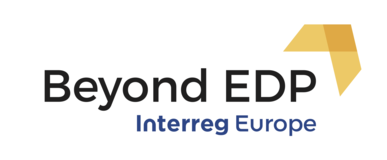The deployment of Research and Innovation Strategies for Smart Specialisation (RIS3) in Europe introduced several novelties in the development of R&D policies, not only from the methodological point of view, but also because the linkage among these strategies and the Structural Funds.
The efficiency of the RIS3 is largely based on the adequate understanding and implementation of the Entrepreneurial Discovery Process (EDP). In this process, the government, with entrepreneurs, researchers and citizens build a common vision of the region, identifying the best areas of specialisation, and facilitating the emergence and growth of new activities.
The methodology for the design of RIS3 has been harmonised by the European Commission, the EDP being a central element. Nevertheless, improving the way for moving the state of the art from a ‘snapshot ED’ at the RIS3 design stage to a ‘continuous ED Process’ still remains as a challenge.
The Castilla y León example
The RIS3 of Castilla y León is the regional R&D and Information Society’s planning document for the period 2014-2020. This Strategy is, in fact, the continuation of a path that Castilla y León started in 1997, with the involvement of enterprises and research centres in the design of a common vision, to be later implemented by public R&D and innovation policies. However, this exercise of involvement of different actors has been traditionally carried out almost exclusively at the design stage of each one of the former strategies (i.e., a single exercise every 7 years).
The RIS3 of Castilla y León was developed following the methodology proposed by the European Commission1, this resulting in a broad involvement of entrepreneurs, R&D actors, and the regional government. In practice, EDP was mainly carried out through different working groups, which were organised in order to determine regional opportunities in terms of regional assets in economy, technology and science. This resulted in an extraordinary exercise, mobilising a number of regional actors, and implying a considerable effort.
Even though this work was an essential part of the identification of the RIS3 priorities in our region, ED was not entirely established as a continuous process. More precisely, EDP in the RIS3 of Castilla y León was more conceived as a preliminary diagnostic exercise than a continuous process feeding the strategy.
Feasibility of a continuous mobilisation of a considerable number of actors, particularly entrepreneurs may be questionable in large regions (more than 90,000 Km2, in the case of Castilla y León). The challenge is, therefore, to identify and implement efficient and sustainable continuous EDP mechanism through active research networks and entrepreneurial structures in the region, including clusters, technology and research centres, etc.
As in Castilla y León, other regions have to address this issue, ensuring appropriate mechanisms to mobilize regional actors and assets in a systematic continuous process. Reviewing how different regions are approaching this challenge will be a definite contribution to the improvement of efficient implementation of RIS3 across Europe.
References:
• 1 Guide to research and innovation strategies for Smart Specialisation. European Commission, May 2012.









